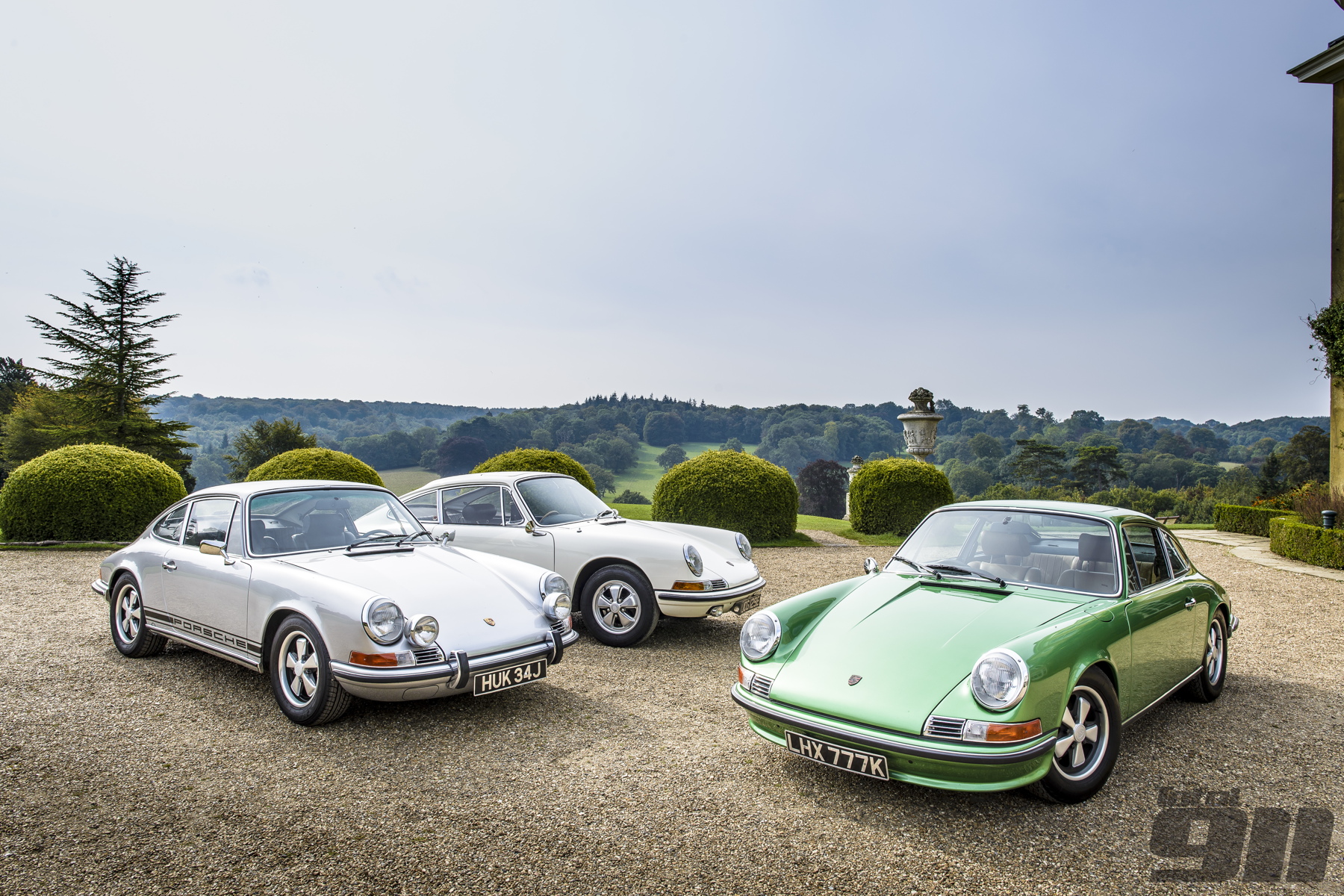The Porsche 911S at 50: 2.0S, 2.2S and 2.4S driven
These are the 911Ss. For six years they topped the 911 range; the fastest, the most luxurious, the most expensive. Then the RS was unveiled to an enthralled Zuffenhausen faithful in 1973. The S remained ‘Super’ for one more year but, as the 911 headed into the impact-bumper era it was usurped again, with the 911 Carrera 2.7 becoming prince to the Carrera 3.0 RS’s king.
In 1978 the 911S died out altogether, amalgamated with the Carrera bloodline to form the SC. Its return to global-production 911s would take nearly two decades, with the launch of the 993 Carrera 4S in 1995 reviving the tradition of this smoothly snaking Latin letter. As of now, each generation of water-cooled 911 has featured at least a single Carrera S in the range.
Thanks to its turbulent history post-1973, all pre-impact-bumper 911Ss enjoy a special place in Porsche folklore, reflected by today’s astounding classic values.

18 months ago this mouth-watering, air-cooled triumvirate could have graced your collection for the price of a single 1973 Carrera RS. Now your £300,000 budget is unlikely to even secure two of these 911 icons, such has been the surge of interest in this famed variant.
The 2.7 RS may often steal the plaudits, but it owes its fabled reputation more to the track than the road; it was the S that took on the responsibility for cementing the 911 legend during those formative years. Yet, with production of this classic halo car spanning seven and a half years (resulting in 2.0-litre, 2.2-litre and 2.4-litre variants), which series of 911S should you set your sights on?
Released in 1966, the 0-Series 911S’s 901/02 flat six retained the 80mm bore and 66mm stroke of the original Porsche 901 engine. However, forged light-alloy pistons and steel con-rods replaced the standard items with 42mm intake and 38mm exhaust ports and twin Weber 40IDSC3 carburettors, to yield a significant 30bhp gain over the standard 911 powerplant.

Providing the first 911S with the dynamics it deserved, Helmuth Bott’s team fitted a rear anti-roll bar alongside a stiffer front item, and adjustable Koni dampers. It also became the first 911 to gain internally vented brake discs, whose cooling was aided by the introduction of the new, 4.5-inch-wide, forged-alloy Fuchs wheels (a move that saved over 8kg compared with the previous steel wheels).
Our Ivory White example (owned by Marcus Carlton) previously went head to head with a 991 Carrera S in issue 114, sowing the seeds for this group test where its ‘competition’ comprises less contemporary German engineering.
Despite this, there are numerous aesthetic details that place this Porsche as the trio’s elder statesmen. The original Fuchs wheels feature less black paint than later rims and, combined with the spindly 165-section tyres and high ride height, the original 911S has an historic aesthetic that continues inside.
To celebrate the Porsche 911S’s 50th birthday in style, you can read our 2.0 v 2.2 v 2.4 group test in full by ordering your copy of Total 911 issue 120 online for just £1.15. Alternatively, download it straight to your digital device here.


Comments (0)